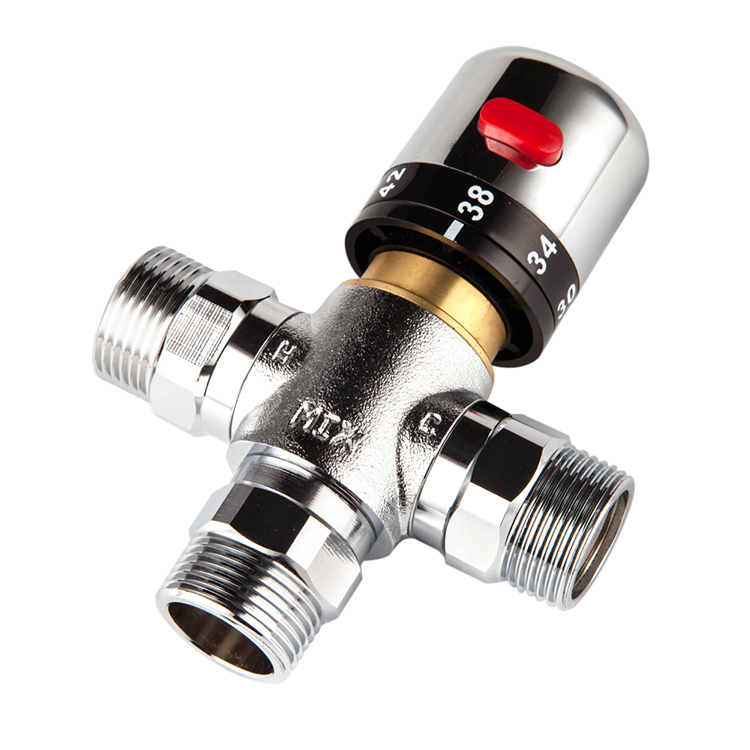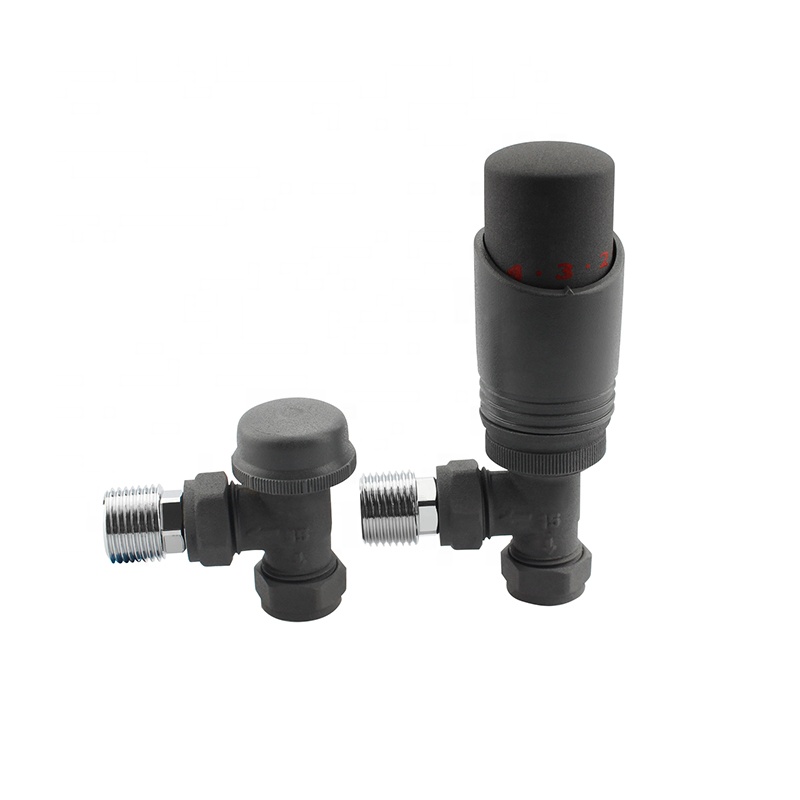Finding suitable radiator valves for your house isn’t as straightforward as you think. Some time ago, radiators were off or on in the center. Yet, radiator valves have altered the contest and how we intend home heating.
Radiator valves give you more grasp over the heating. Furthermore, more control implies more relief. In this article, I explain the different sizes, kinds, and styles of radiator valves.
How Does a Radiator Do?
When you turn the primary heating up, your boiler fires right into it. It warms water, distributed off the radiators around your home. The work of the radiator valves is to permit a specific limit of high-temperature water into every radiator.
So you could turn the radiator valves down in rooms you’re not utilizing so that the radiators don’t warm up. Besides, this is a simple way to your piece for the planet. You’ll be getting a good deal on your heating bills.
Every radiator in your home requires a couple of radiator valves. One valve controls how much high-temperature water enters the radiator. Yet, others balance the system by controlling how much power the radiator produces.

What is a Lockshield Valves?
A lockshield valve is a little bit not the same as thermostatic and manual valves. It controls how much water can leave a radiator. Each radiator has one, and you want them to ensure every one of the radiators stays adjusted in your primary heating system.
A balanced system is a juncture at which the radiators in a home are all working at a similar temperature. More heated water will stream to the radiators closer to the heater, distinguished from radiators further away. Keeping the system adjusted ensures all rooms heat up equally.
You shouldn’t need to build any changes when introducing a lockshield valve. If you’re changing your valves to keep a similar style, you can alter these. Yet, this is not an essential step.
Guidelines to Find Which Radiator Valves You Need
So you want to buy a radiator valve and don’t know where to begin. A part like buying another radiator is knowing which radiator valves you want. It can be unclear if you don’t know what to see. The work your valves need to play and how you believe they should look when introduced.
While purchasing the radiator valve, you’ll need to consider:
- Cost
- Effectiveness
- Finish and Color
- The brand
- Shape
- Size
It could seem like a great deal to consider. Yet, it’s simple when you have the information. It assists you with finding the most valuable items (and this aid).
You’ll need to consider whether you believe your valves should match the look of your radiator. On the other side, if you need an exciting plan that adds a person to the installation.
Working Criteria of Radiator Valves
Radiator valves all work by controlling the stream of water into and out of the radiator. They move as far as how much control they offer yet, whether it is possible to make autonomous heating for that room. Yet, whether this control from a distance.
It is not too thrilling to visualize fitting any valve onto any radiator. The critical question kind of system would you like to make?
Thermostatic valves permit some level of control. A completely Smart system allows complete oversight of any room, whenever of the day. Yet you could be lying in bed and using the application to switch the heating off in the children’s rooms; they’re currently asleep.
Kinds of radiator valve
There are different kinds of radiator valves. I should explain them in more detail:
Manual radiator valves
A manual radiator valve is the most recognized. Turning the valve changes how much-boiling water moves through the radiator. Yet, it also needs to know how much power is transmitted. You turn up, down, or off, depending on whether you maintain that the room should be hotter or colder.
Manual valves are the least difficult to work. Generally, it is more straightforward than thermostatic valves. One disadvantage with these valves is that you must track them and switch them off by keeping them.

Points with Manual Radiator Valves
- It is firmer to regulate room temperature as the valve uses a basic turn up or turn down the device.
- As they are normal, they are not challenging to find them. There are more valve styles to look at.
- It is simple to control your central heating, yet it should be done manually.
- There is no automation, so your radiators will not set the temperature manually.
Modern Radiator Valves
While a modern radiator valve has a radiant preference, the current radiator valves generally have a more insignificant and less forcing focus. Current radiator valves are more modest and have as few plan highlights as expected.
They are fit spaces where you need to make a contemporary technical layout and a valve that looks like it.

Double-fuel Radiator Valves
Sometimes, you’ll find that you need a radiator that uses your current primary heating system while acting. That’s what double-fuel radiators’ do, with the radiator having an inner component that works. A double-fuel radiator valve should be able to imitate the intensity of your standard heating. It gives the correct power when the electric part is used. The primary advantage of these valves is that they negate the need to have new pipework completed.
Thermostatic radiator valves
Thermostatic radiator valves give you more command over your home’s temperature than manual valves. This is because you set the valve to your ideal room temperature. The TRV incorporates liquid or wax, which can ‘detect’ the temperature in the room. When your perfect temperature has been attained, the TRV will shut down the flow of heated water.
It stops the radiator from getting any more boiling. It infers that radiators can manage themselves more often than not. Yet, so you will not be spending money on warming, you needn’t have difficulty with it.

Here are a couple of interesting points.
- Should not introduce rooms with a wall-mounted indoor regulator (both will be content to control the temperature in the room).
- It is not recommended in washrooms or shower rooms. The more strength will complicate the TRV from the shower or washroom.
- While TRVs can self-regulate more often. Yet, they should check (around one time each year) to ensure they’re working.
For the most straightforward chance to go about their business and keep your heating system working. Yet, you make sure that your heating system adjusts. It implies assuring the flow of boiling water and distributing it around your home so that the radiators heat up at a similar rate.
Smart radiator valves
A smart indoor regulator links with Wi-Fi. It permits you to control your heating using an application from an intense device. Suppose the smart indoor regulator is viable with smart TRVs. Yet, you have control over each TRV in your home from your application anywhere you are on the globe.
You wish to angle, straight, corner, or H-block valves, whether you select manual, smart, or thermostatic radiator valves before you become aware.
Some Other Types of Radiator Valve
Straight, Angled, Corner, Or H-Block?
Your radiator valves should be viable with the place of the deltas on your radiators. It links with the boiling water pipes. A few lines will come from the floor, while others might arise from a wall.
It may not be tricky to track down the deltas on your radiators. Inquire on whether you don’t know.
Most radiators (single- or two-panel convectors or compact radiators) have base edge links. It implies they come out on one or the other side of the radiator at the bottom on a level plane. Yet, the pipework will generally come from the wall. Yet this implies angled valves are expected to join the pipework to the radiator.
Modern radiators might have center-linked valves (in the middle and at the base). It implies you don’t have valves and pipework standing along the edge, so that it can be an incredible space saver. Suppose a radiator should link with pipework coming up from the floor. The radiator has inlets at the back (not the sides). In that case, straight valves might be a definitive choice.
Straight radiator valves

These valves have no twists. It permits the water to stream straight along either a wall or up from the floor.
Angled radiator valves
Angled valves have a 90° curve. It implies it can interface the pipework with the radiator at a point. They are the most well-known radiator valves. It is a good choice for homes with pipework emerging from the wall or up from the floor.

Corner radiator valves
H-Block radiator valves
Corner valves are like calculated valves yet don’t stand out from the lower part of a radiator to such an extent. They’re at times preferred in homes where space is restricted. In any case, they are introduced opposing inwards, lined up with the wall. This can be more to change.
It is ideal for radiators with center links instead of the base edge. You’re saving space by introducing a radiator with connections in the center instead of at the two sides. These valves can likewise be simpler to introduce and supplant.
What The Numbers On Radiator Valves Mean
Radiator valves have numbers or images to address how much power the radiator puts out. Typically, these numbers range from 1 – 6. Turning the valve to 3 should give you a room temperature of around 20°C. Each number above or below addresses a signal degree. So a 2 is about 16°C while a 4 is approximately 24°C.
This numbered system is used instead of the correct temperatures. Yet, an exact room temperature can’t be ensured. It will impact the degree of safety if the radiator is by a window and how well your boiler is acting.
It’s good to focus on your radiator valve settings. Yet, it may not need the most incredible power in your room. You might favor a more relaxed room yet a hotter washroom. Furthermore, on keeping bills low, remember that for every degree below 20°C, you can save 6% energy use.
Get radiator sizing right.
By radiator valve size, we mean the pipework and links instead of their actual size. 15mm lines are the most standard. Most valves are made up to be suitable for this size. Yet, you might run over pipework between 8mm – 28mm.
If you have simpler or more excellent pipework than 15mm and are engaging in finding the necessary valves, you can buy a connector.
Radiator valve styles
The critical thing to consider is the style and look. Yet, whenever you’ve picked the right kind and size of valve for your home. A wide variety of classes are available in the market. These are basic, traditional, classic, exquisite, and exemplary choices for period homes.

What Amount Do Radiator Valves Cost?
Estimated Price
| Type of Radiator Valve | Ave. Cost |
| Smart | £3 – £50 |
| Manual | £2 – £15 |
| Thermostatic | £3 – £35 |
It will help if you think about the expense of the installation. You’ll need a heating professional to fit the new radiator valves. Yet, they should drain the radiator before the valve is provided and ensure the valve and connectors become. Yet, it balances the heating system to ensure all radiators are warming similarly.
The expense of this work will shift, yet you’re checking out at around a part of a full-time position for one radiator. A comprehensive system requires an entire day, including around ten radiators.
